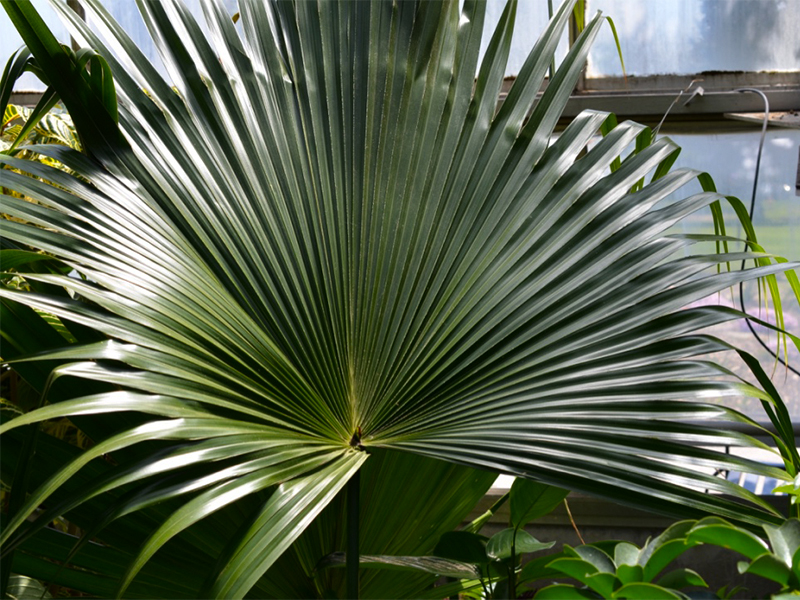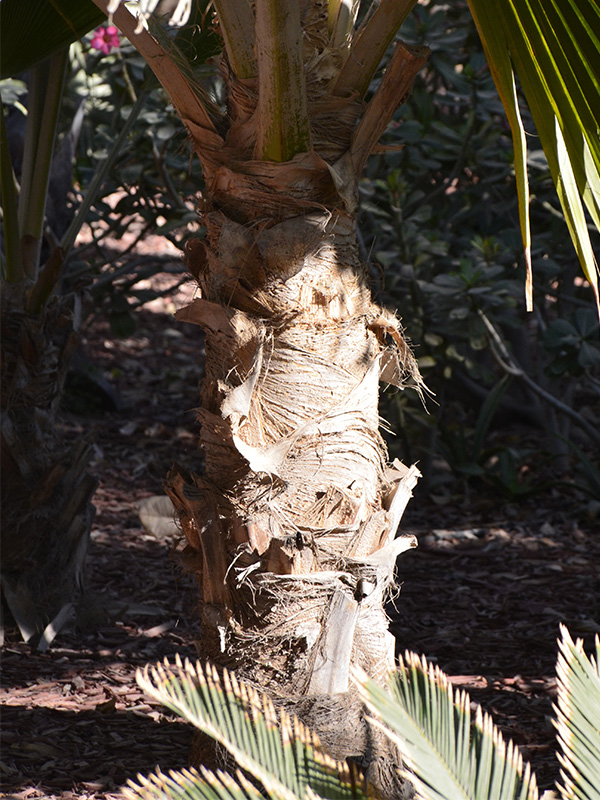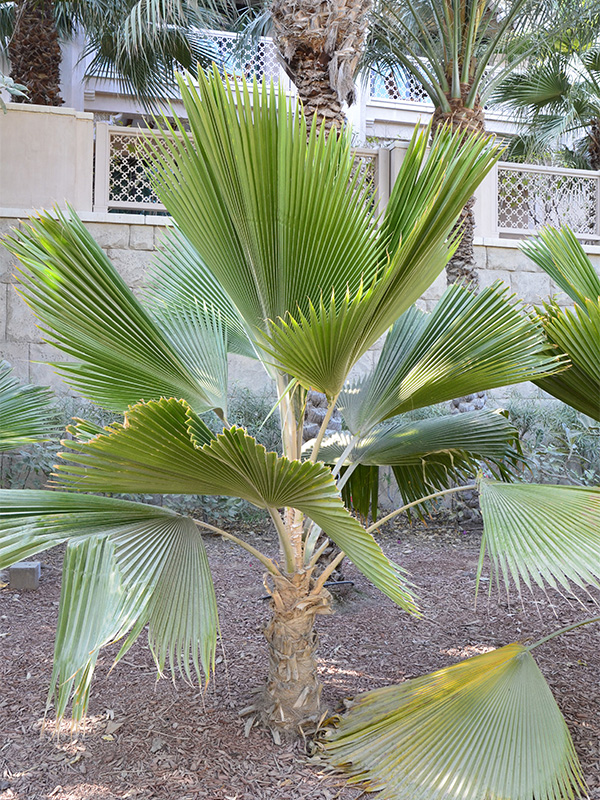
Perennials, Tropicals > Livistona > Livistona chinensis > Livistona chinensis
Livistona chinensis
Chinese Fan Palm, Fountain Palm, Serdang, Chinese Fountain Palm
Origin: Southern Japan, Ryuku and Bonin Islands and southern Taiwan.
| Family |
| Arecaceae |
| Genus |
| Livistona |
| Species |
| chinensis |
| Category |
| Perennials, Tropicals |
| Type |
| Tree (evergreen) |
| Synonyms |
| Chamaerops biroo, Latania chinensis, Livistona japonica, Livistona mauritiana, Livistona oliviformis, Livistona sinensis, Livistona subglobosa, Saribus chinensis, Saribus oliviformis, Saribus subglobosus |
| USDA Hardiness Zone |
| 9 - 11 |
| Canadian Hardiness Zone |
| Requires cool season protection under glass. |
| RHS Hardiness Zone |
| H1c - H4 |
| Temperature (°C) |
| -10 - 10 |
| Temperature (°F) |
| 14 - 50 |
| Height |
| 1.8 - 9 m |
| Spread |
| 1.8 - 3 m |
Photographs
Description and Growing Information
Flowering Period
| General Description |
| Livistona chinensis is a fan palm tree with a solitary, erect stem topped with bunches of long, dull green-brown blades. |
| Landscape |
| Specimen planting, pot planting, glass-house planting and ornamental use. |
| Cultivation |
| Full sun and partial-shade. Well-drained and moist soil with a pH of 4.5 - 9.1 (very acidic to very alkaline). Drought tolerant. |
| Shape |
| Erect, tall and fanning. |
| Growth |
| Medium |
| Habitat |
| Coastal forests. |
| Bark/Stem Description |
| The trunk is 20 - 30 cm wide. |
| Leaf Description |
| The leaves are fan-shaped with short marginal spines and are 2 m. Leafstalks are shorter than the blade. |
| Flower Description |
| The flowers appear in clusters of 4 - 7, subglobose in bud and are 2 - 2.5 m long. |
| Fruit Description |
| The fruit is ovoid to spherical and 2.5 cm wide. |
| Colour Description |
| The bark is brown and become grey as it ages. The leaves are a dull greenish-brown. The flowers are white to yellow. The fruit is deep bluish-green to a greyish-pink. |
| Texture Description |
| The fruit appears glossy. |
| Notable Specimens |
| Centennial Conservatory, Thunder Bay, Ontario, Canada. |
| Propagation |
| By seed. |
| Ethnobotanical Uses (Disclaimer) |
| Leaves are widely used to make fans in China, as well as being used to make hats, brooms, and raincoats. The fibres, extracted from the sheath and the petiole of the leaves, are made into cordage. |




